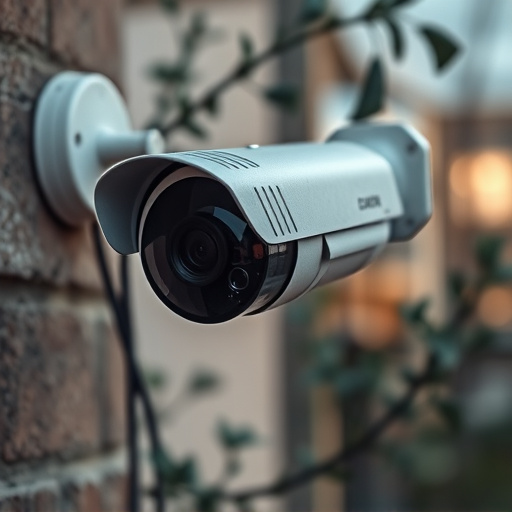The Fake Security Camera Angle Guide provides crucial advice on placing fake security cameras for maximum effectiveness and realism. It suggests strategic angles, blending with features like LED indicators, high-def imaging, and hidden cabling to deter intruders without obviousness in high-security areas. This guide ensures the optimal positioning of these devices, enhancing both security and visual authenticity.
In today’s digital era, enhancing home security has become paramount. One innovative solution gaining traction is the fake security camera with simulated wiring, offering a cost-effective way to deter potential intruders. This article serves as your comprehensive guide, delving into the essential components and strategic placement techniques for an effective Fake Security Camera Angle Guide. Understanding the needs of faux cameras and mastering wiring simulations can significantly boost your home’s safety without breaking the bank.
- Understanding Fake Security Camera Needs
- Components of a Simulated Wiring System
- Placement and Visualization Techniques for Optimal Angle Guide
Understanding Fake Security Camera Needs
When considering a fake security camera, understanding its intended placement and purpose is crucial. The Fake Security Camera Angle Guide provides valuable insights into meeting these needs effectively. Different locations demand various camera angles to ensure optimal coverage; for instance, a wide-angle lens might be suitable for spacious interiors, while a telephoto lens could capture finer details in tighter spaces.
Simulating the wiring of a real security system adds realism and enhances the overall effect. This aspect is particularly important for deterring potential intruders, as it creates the impression of a fully functional surveillance setup. By addressing both angle considerations and realistic wiring, you can create an authentic-looking fake security camera that serves its intended purpose efficiently.
Components of a Simulated Wiring System
A fake security camera with simulated wiring is a sophisticated mimicry designed to look and function like a real security device, all while providing an added layer of protection or deterrence. The system typically comprises several key components that work together seamlessly. These include a high-definition camera unit, a mock power supply, and various lengths of flexible, yet sturdy, simulated cable. The camera itself is often made to resemble popular security camera models, complete with LED indicators and adjustable angles, allowing for a realistic Fake Security Camera Angle Guide.
The mock wiring adds a crucial layer of realism by replicating the appearance of traditional security camera cabling. This not only enhances the overall authenticity but also serves as a strategic tool. In many cases, the simulated cables can be hidden or disguised within existing structures, making it difficult for potential intruders to identify and disrupt the surveillance system. This strategic element is particularly valuable in high-security areas, where maintaining an unobtrusive presence is paramount.
Placement and Visualization Techniques for Optimal Angle Guide
When placing a fake security camera, one of the key considerations is maximizing its visual impact while maintaining realism. The optimal angle for the camera should mimic genuine surveillance equipment, typically pointing downward with a slight tilt to capture a clear view of the area. This often involves positioning the camera at a height that aligns with real security systems, usually eye-level or slightly elevated, ensuring it’s not too obvious as a fake.
Visualization techniques play a crucial role in making the fake camera appear realistic. This can include simulating wiring by strategically placing small, realistic-looking cables and connectors around the camera body. The arrangement should resemble actual security system wiring, with connections carefully concealed yet visible enough to lend credibility to the setup. Additionally, subtle adjustments in lighting and shadow can enhance the realism, creating reflections and shadows that a genuine camera would cast at that angle and height.
A fake security camera with simulated wiring offers a practical solution for those seeking an effective Angle Guide without the cost and hassle of installing physical cameras. By understanding the specific needs, incorporating key components, and strategically placing these devices, users can create a realistic and deterrent visual presence, ensuring optimal coverage for their properties. This innovative approach to home security provides a simple yet powerful tool in the fight against crime.
